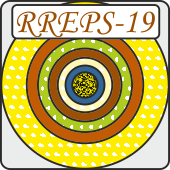Speaker
Description
In a series of works so-called reversed (backward) Cherenkov-transition radiation (RCTR) was studied [1,2]. This effect can occur when a charged particle bunch crosses the boundary between a vacuum and a left-handed medium (LHM). RCTR can be perspective for different applications in the domain of the beam diagnostics, evaluation of the medium characteristics and development of new methods of generation of gigahertz and terahertz radiation. Artificial anisotropic materials or metamaterials (MTMs) possessing left-handed properties in the GHz and THz band have been demonstrated recently (see, for example, [3-4]). In such a medium, a moving charged particle generates reversed (backward) Cherenkov radiation (RCR). The RCR can penetrate through the boundary into a vacuum and, as a result, the RCTR can be generated at some condition [5]. Here, we consider the case of waveguide loaded with the semi-infinite anisotropic MTM.
We analyze the electromagnetic field of a bunch that moves uniformly in a circular waveguide and crosses a boundary between a vacuum area and an area filled with MTM. The MTM is characterized by the diagonal dielectric permittivity tensor with components possessing frequency dispersion of plasma types. The investigation of the waveguide mode components is performed analytically and numerically with methods using as well as in papers [2, 6-7]. The cases when the bunch flies into and out of the MTM are under consideration. In compliance with the parameters of the MTM, Cherenkov radiation has direct or reversed direction in relation to the bunch motion.
In the case when the bunch flies into the MTM, intensive radiation (RCTR) can be generated in the vacuum area. The main properties of this radiation are described, and essential differences from the RCTR in the case of isotropic LHM are revealed. The analytical and numerical investigations show that the RCTR in the vacuum area always consists of a finite number of propagating modes. We show that selection of the problem parameters allows obtaining both multimode radiation and monochromatic one.
The work was supported by the Russian Science Foundation (Grant No. 18-72-10137).
[1] S. N. Galyamin and A.V. Tyukhtin, 2009 Phys. Rev. Lett. 103 194802
[2] T.Yu. Alekhina and A.V. Tyukhtin, 2018 Radiat. Phys. Chem. 145 43–49
[3] S.T. Chui, L.B. Hu, Z. Lin and L. Zhou, in Physics of Negative Refraction and Negative Index Materials, edited by K. M. Krowne and Y. Zhang (Springer-Verlag, New York, 2007), p. 75.
[4] Z. Duan, X.Tang, Z. Wang et al., 2017 Nature Communications 8 14901
[5] S. N. Galyamin and A.V. Tyukhtin, 2010 Phys. Rev. B. 81 235134
[6] T.Yu. Alekhina and A.V. Tyukhtin, 2016 J. Phys.: Conf. Series 732 012012
[7] T.Yu. Alekhina, A.V. Tyukhtin and S. N. Galyamin, 2019 Phys. Rev. Accel. Beams 22 041301
